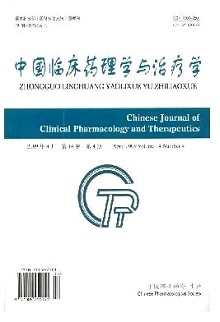Comparion between therapeutic effects of rhein and pioglitazone on experimental nonalcoholic steatosis hepatitis rats
YING Wei-xing, ZHU Chou-wen,LI Rong-zhou
2009, 14(4):
397-400.
 Asbtract
(
123 )
Asbtract
(
123 )
 PDF (300KB)
(
178
)
References |
Related Articles |
Metrics
PDF (300KB)
(
178
)
References |
Related Articles |
Metrics
AIM: To approach the therapeutic effect of rhein and pioglitazone respectively on nonalcoholic steatosis hepatitis(NASH)rats and the possible mechanism.METHODS: 52 male SD rats were randomly divided into 4 groups :control group (n=14), model group (n=14), rhein group (n=12), piogli-tazone group (n=12), the body weight were 140 -160 g.Control group were fed with normal diet for 20 weeks (2 rats for 12 weeks and then were executed).Model group were fed with high-fat and high-cholesterol diet consisting of normal diet , 10 %lard and 2 %cholesterol , for 20 weeks (2 rats for 12 weeks and then were executed).Drugs were given after 12 weeks fed with high-fat and high-cholesterol diet.Rhein (5 g/L suspension)was prepared with normal saline , intragastric administration(100 mg/kg-1?d-1) every day in fixation time.Pioglitazone group (8 mg/kg-1 ?d-1)were intragastric administered.All rats were executed after 20 weeks , and the body weight , liver humid weight were determined , the liver index number was calculated.The levels of fasting blood glucose(FBG), aminopherase and blood fat were determined.The fasting insulin (FINS)and TNF-αwere measured by radio-immunoassay , the insulin resistance index was calculated.The levels of malonaldehyde(MDA), glutathione peroxidase(GSH-Px)in hepatic tissue bomogenate were measured using enzymic method , the liver histopathologic slides were dyed with HE dyeing.RESULTS: Compared with model group , the levels of ALT , AST , blood glucose , insuline , insulin resistance index , TNF-α, MDA were obviously decreased in drug groups.Compared with pioglitazone group , the hepatic steatosis in rhein was obvious(P<0.05), but the inflammation in liver was lower grade.CONCLUSION: Rehin and pioglitazone have therapeutical effects on NASH rats.However , they are different in the aspects of improving hepatocyte steatosis and inflammatory.


